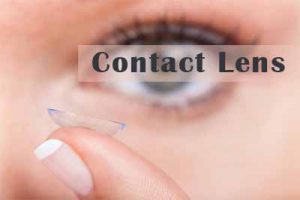- Home
- Editorial
- News
- Practice Guidelines
- Anesthesiology Guidelines
- Cancer Guidelines
- Cardiac Sciences Guidelines
- Critical Care Guidelines
- Dentistry Guidelines
- Dermatology Guidelines
- Diabetes and Endo Guidelines
- Diagnostics Guidelines
- ENT Guidelines
- Featured Practice Guidelines
- Gastroenterology Guidelines
- Geriatrics Guidelines
- Medicine Guidelines
- Nephrology Guidelines
- Neurosciences Guidelines
- Obs and Gynae Guidelines
- Ophthalmology Guidelines
- Orthopaedics Guidelines
- Paediatrics Guidelines
- Psychiatry Guidelines
- Pulmonology Guidelines
- Radiology Guidelines
- Surgery Guidelines
- Urology Guidelines
New smart contact lens which detects glucose levels in diabetics

In the past, many attempts have been made to monitor glucose levels in tears with smart contact lenses, but they are often not used due to poor wearability.Professor Jang-Ung Park from School of Materials Science and Engineering and colleagues have carried out a breakthrough research and developed a smart biosensing contact lens which can detect glucose levels in patients with diabetes. The new smart contact lens uses electrodes made up of highly stretchable and transparent materials and has been able to solve discomfort issue.Their findings have been published in Science Advances, on January 25, 2018
According to the research team, this innovative smart lens with built-in pliable, transparent electronics can monitor glucose levels from tears in the eye. The device has not yet been tested in humans. However, the research team expects that the release of this device will offer diabetics a pain-free way to measure their glucose levels with the blink of an eye.
For patients with diabetes, monitoring and controlling blood sugar levels are extremely important because having high blood glucose levels for extended periods of time can lead to a host of diabetes complications. An enzyme based finger-pricking method is the most commonly used technology in diabetic assessment. However, such approach has been said to reduce compliance among diabetic patients.
To solve contact lens discomfort issues, Professor Park and his research team have unveiled a new smart contact lens that uses electrodes made up of highly stretchable and transparent materials. This clear, flexible lens also contains a glucose sensor that sends electrical signals to an LED. With this sensor, patients can transmit their health information in real-time using the embedded wireless antenna in the lens.
As shown in the figure below electric power that activates the LED pixel and the glucose sensor is wirelessly transmitted to the lens through the antenna. After detecting the glucose concentration in tear fluid above the threshold, this LED pixel turns off.
In the study, the research team has successfully tested their prototype lens on a live rabbit via non-invasive in-vivo testing. The rabbit showed no signs of abnormal behavior during repeated eye blinks and the LED pixel turned off when tear fluids with glucose concentration was over the threshold. In addition, during the wireless operations, this smart contact lens could still maintain the eye temperature stably without abrupt heating.
"These smart contact lenses are made made of transparent nanomaterials and therefore do not obstruct the wearer's view," says Jihun Park in the Combined M.S./Ph.D. of Materials Science and Engineering, the first author of the study. "Besides, because the system uses wireless antenna to read sensor information, no separate power source, like battery is required for the smart contact lens sensors."
"The in vivo tests using a live rabbit ... provided the substantial promise of future smart contact lenses for noninvasive health care monitoring using human eyes and tears," says the research team.
"Our smart contact lens provides a platform for wireless, continuous, and noninvasive monitoring of physiological conditions, as well as the detection of biomarkers associated with ocular and other diseases," says Professor Park. "It also offers the potential for expanded applicability in other areas, such as smart devices for drug delivery and augmented reality."
He adds, "We are now a step closer to the implementation of a fictional idea for a smart contact lens in the films, like "Minority Report" and "Mission: Impossible."
For more details click on the link : Science Advances, 2018; 4 (1): eaap9841 DOI: 10.1126/sciadv.aap9841
contact lenscontact lensesDiabeticsenzymeglucoseglucose levelsJang Ung ParkJournal Science Advancesprototype lensScience Advancessmart contact lenses
Source : Press ReleaseNext Story
NO DATA FOUND

Disclaimer: This site is primarily intended for healthcare professionals. Any content/information on this website does not replace the advice of medical and/or health professionals and should not be construed as medical/diagnostic advice/endorsement or prescription. Use of this site is subject to our terms of use, privacy policy, advertisement policy. © 2020 Minerva Medical Treatment Pvt Ltd